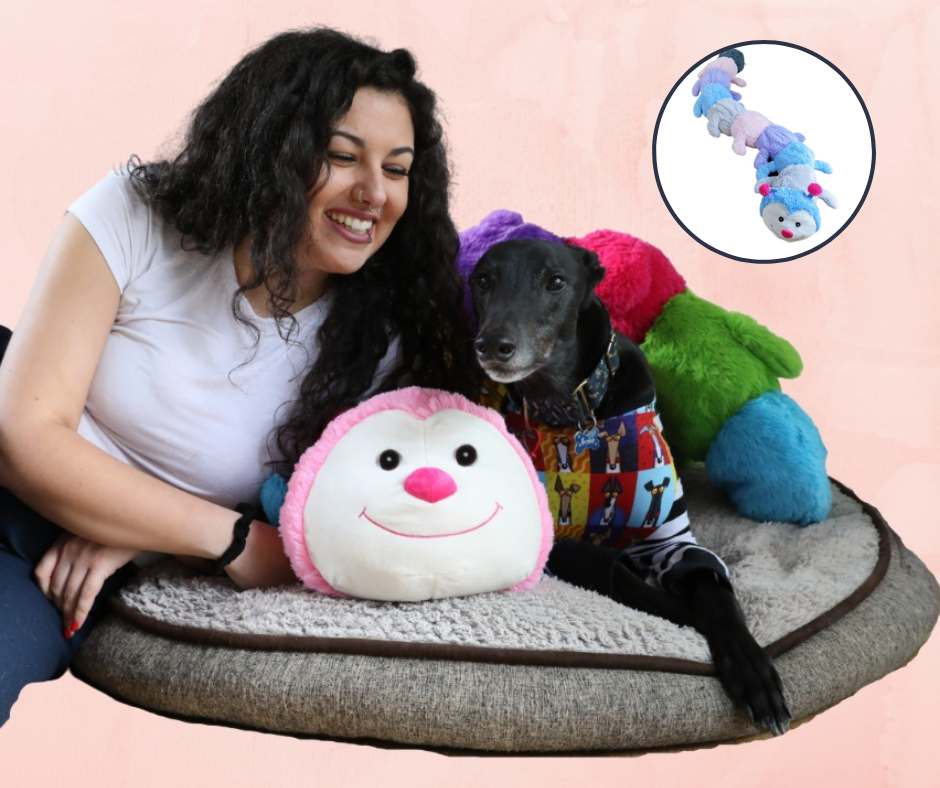
Are you an ecommerce brand looking to boost your online presence and expand your audience reach? Influencer marketing might just be the key! But finding the perfect influencer can be a daunting task.
You might be asking yourself, how do you identify the right influencer for your brand and what metrics are important? Likes, reach, engagement, or the quality of followers.
We’ll also show you how these metrics can influence your brand’s performance by enhancing brand awareness and driving conversions. And don’t worry, we won’t leave you hanging when it comes to tracking and measuring influencer metrics. We have tips on using analytics tools and leveraging promo codes and affiliate links to measure ROI. So get your note pad ready, we’re going to take your ecommerce strategy to the next level with the power of influencer marketing!
Incorporating Influencers into your marketing is a must-have strategy for ecommerce brands in 2023. It can significantly increase brand awareness and help you reach a wider audience. By partnering with influencers, you can build trust and credibility with consumers, as they trust the recommendations of their favourite influencers. Additionally, influencers can provide valuable user-generated content for your brand, which resonates with your target audience. It has been proven to lead to higher engagement rates and conversions. To choose the right influencer, it’s essential to consider metrics such as audience demographics, engagement rate, follower count, and authenticity.
UGC refers to any content created by consumers that showcases a brand or product. By collaborating with influencers or ambassadors, brands can encourage their followers to create UGC and share it on social media platforms. This type of content not only helps increase brand awareness and reach new audiences but also can drive sales.
Influencer marketing has the power to expand audience reach and tap into new markets for ecommerce brands. By partnering with influencers, you are able to leverage the followers of influencers and build trust with their fan base. Create authentic content that resonates with their audience, will lead to higher engagement rates and increased brand awareness. Metrics such as reach, engagement rate, follower growth, and conversion rate play a vital role in evaluating the success of influencer marketing campaigns. Analysing these metrics allows ecommerce brands to choose influencers who align with their target audience and brand values.
When it comes to finding the right influencer for your brand, there are several essential metrics to consider. First, look for influencers with a large and engaged audience that aligns with your target market. Assess their level of engagement, such as likes, comments, and shares, to determine their effectiveness. It’s also important to consider their authenticity and whether their values align with your brand. Research their reputation and credibility within their industry or niche. Finally, evaluate the potential return on investment by considering factors such as cost, conversion rates, and previous campaign results.
Two key metrics play a vital role in determining the success of your campaign – reach and engagement. Reach refers to the number of followers or subscribers an influencer has on their social media platforms. It helps you assess their potential audience and the exposure your brand or product will receive. On the other hand, engagement measures the level of interaction and involvement that an influencer’s audience has with their content. High engagement indicates an active and interested audience, leading to better campaign results. So, when selecting an influencer, both reach and engagement metrics are crucial for driving brand awareness and reaching a relevant and engaged audience.
When it comes to follower count vs quality of followers, the quality of followers should always take precedence. It’s better to have a smaller but engaged and targeted audience than a large disinterested one. Look for influencers with high engagement rates, active comments sections, and genuine interactions with their followers. Consider demographics, interests, and relevance to your brand when assessing the quality of an influencer’s followers.
When choosing an influencer for your brand, there are five essential metrics that you need to consider. First, take a look at their audience engagement on social media platforms such as Instagram and Facebook. The higher the engagement rate in terms of likes, comments, and shares, the more effective their influence may be. Secondly, consider the reach of the influencer, which is determined by the number of followers or subscribers they have. A larger following means a potential wider impact on your target audience, BUT not always. Authenticity is another important metric to evaluate. Look at the influencer’s content, partnerships, and audience feedback to gauge their credibility. It’s important that their niche or area of expertise is aligned with your brand, and target audience. Lastly, assess the cost-effectiveness of partnering with an influencer by considering their metrics and potential ROI.
When evaluating potential influencers for your brand, one essential metric to consider is the engagement rate. Essentially, it is calculated by dividing the total number of likes, comments, and shares on a post by the influencer’s total number of followers. A high engagement rate indicates that the influencer’s audience is actively interested and engaged with their content. It shows that the influencer has a dedicated and loyal following who are likely to trust and be influenced by their recommendations.
Another essential metric to consider is the audience growth rate. This metric measures how quickly an influencer’s follower count is increasing over time. A high audience growth rate indicates that the influencer is attracting new followers and their content is resonating with their audience. But if that audience is growing at an unsubstantiated rate, it can also indicate the purchase of follows or follow/unfollow bots.
When selecting an influencer for your brand, consider conversion metrics. These metrics provide insights into the actual impact an influencer has on driving sales or specific actions, such as clicks or sign-ups. To determine an influencer’s effectiveness in converting their audience, examine their engagement rate and click-through rate on sponsored content. Analyse their past collaborations and partnerships to see if they have a history of driving conversions for other brands.
Thist refers to the overall perception and attitude towards a brand or product. When working with an influencer, consider their audience’s sentiment towards your brand. Will your brand or products resonate with their audience, or feel fake and simply pushing a product they don’t need? Analysing comments, reviews, and feedback from the influencer’s audience can help gauge their sentiment towards your brand.
CTR or Click-Through Rate measures the percentage of people who engage with the influencer’s content by clicking on links or calls to action. A high CTR indicates an engaged audience that is interested in the promoted content. Marketers use CTR as a key performance indicator to assess the success of influencer campaigns in driving traffic and conversions. Historical CTRs also offer insights into an influencer’s ability to deliver results, making it an essential metric for choosing the right influencer.
The metrics of follower count, engagement rate, conversion rate, and brand alignment ALL play a significant role in influencing an influencers campaign performance. Instead of focusing on a particular metric, ensure they are working together in synergy so you get the best outcome.
When it comes to enhancing brand awareness through influencers, there are a few things to consider. We have discussed vanity metrics such as likes and so on. Understanding the audience demographics, such as age, gender, location, and interests, can also help ensure that the influencer’s followers align with your brand’s target market. Assessing the quality of their content, including aesthetics, creativity, and storytelling abilities, can give you an indication of their effectiveness in promoting your brand or product.
Look for influencers with a high engagement rate, indicating that their audience is actively interested in their content. Evaluating reach and impressions will determine how many people will be exposed to your brand through their content. Additionally, assessing an influencer’s authenticity and trustworthiness is crucial. Always track conversion metrics such as click-through rates, website traffic, and sales to measure the impact of influencer campaigns on your brand’s performance.
To track and measure influencer metrics, there are dedicated platforms. Be clear with what metric is important to you and focus on that. When a campaign is complete, we recommend you monitor follower growth rate and conversion as this can still occur for a time afterwards.
Analytics tools offer valuable insights into an influencer’s metrics. While follower count is significant, it should be evaluated alongside other metrics to gauge the quality of an influencer’s audience. Micro influencers can have a better engagement rate showcasing their influence and impact, but at a smaller scale.
By assigning unique promo codes or affiliate links to specific influencers, you can gain further insights into the performance and ROI of their campaigns. (we are a huge fan of codes and links)
This data allows you to determine which influencers are driving the most effective results for your brand. Analysing the usage of promo codes or clicks on affiliate links provides valuable insights into the effectiveness of their content and their ability to drive action from their followers.
Influencer marketing can help your ecommerce strategy by raising brand awareness and reaching a wider audience.
Keep in mind, it is not the only option; there are micro influencers, UGC creators, brand loyalists, collaborations. What is important is to always be genuine and maintain a positive ROI
Say “Hello to your personal eCommerce mentor.

The holiday shopping season is fast approaching, and for Australian ecommerce businesses, it’s time to gear up for one of

Dropshipping rose in popularity during the early 2000s with the advent of Shopify in 2004, which simplified the process of

In a heartwarming tale that underscores the belief that every dog deserves happiness, Cecilia Distefano, a dedicated canine enthusiast, has

How do you choose a good Shopify app for ecommerce? When choosing a Shopify app for ecommerce, consider factors like
Be one of the first 100 people to register for a free copy before it hits the shelf. Register you details below. Hurry book launches October 30.

Sign up to get growth checklist for FREE!